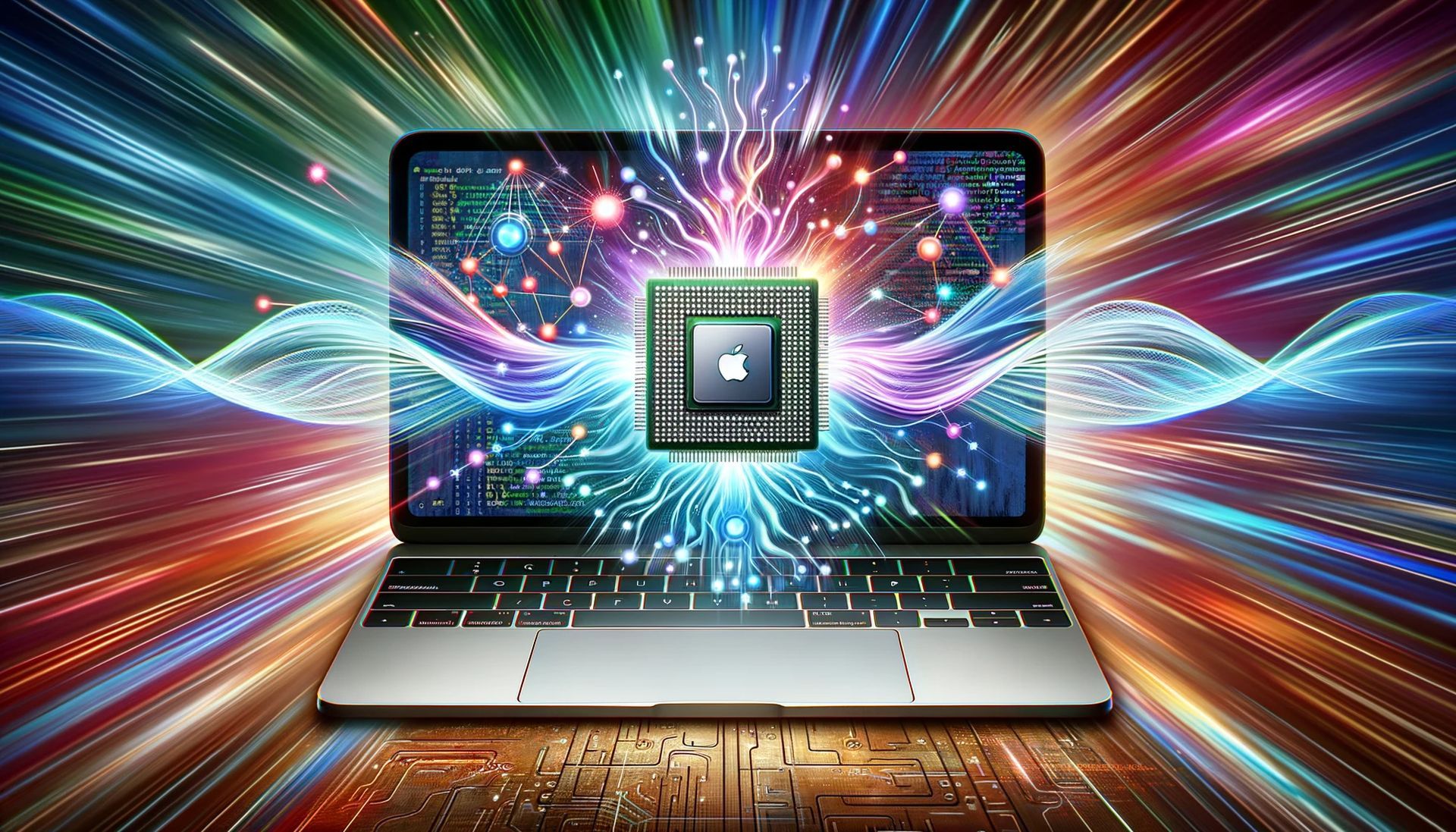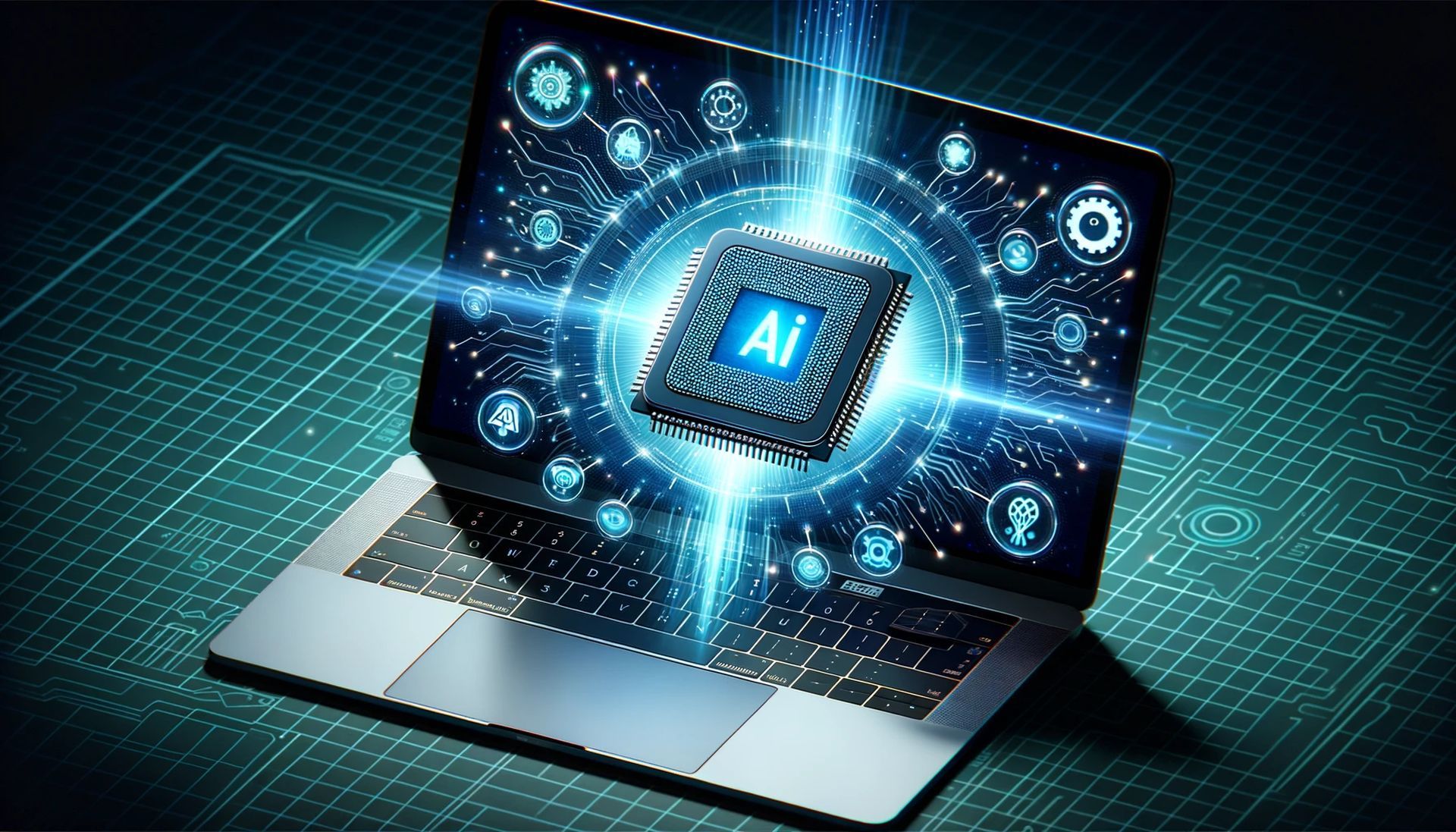Apple’s transition to the 3-nanometer process with the M3 chip represents a significant advancement in chip design, manufacturing and AI. This move to a smaller process size allows for increased efficiency and performance.
By reducing the size of the transistors, Apple has been able to pack more computing power into the same physical space. In the context of AI, the M3 chip offers substantial improvements, setting new standards and pushing the boundaries of what’s achievable in computing.
More power, less space. And when we pivot to AI, the M3 chip series isn’t just setting the bar; it’s launching it into the stratosphere. For those in the trenches of AI for SEO, this is the dawn of a new era, and Apple is once again leading the parade.
M3 chip series specs
Apple introduced three distinct chips under the M3 series: the M3, M3 Pro, and M3 Max. Each chip is designed to cater to different computing needs. The M3, with its next-generation GPU architecture, is tailored for general users seeking enhanced performance. The M3 Pro, boasting 37 billion transistors and an 18-core GPU, is ideal for professionals requiring more graphics-intensive capabilities. Lastly, the M3 Max, with a staggering 92 billion transistors and a 40-core GPU, is crafted for those demanding the highest level of performance, especially in tasks related to AI and high-end video production.

M3 chip:
- Built using a 3-nanometer process.
- Features a next-generation GPU architecture.
- GPU is faster and introduces Dynamic Caching.
- Supports hardware-accelerated ray tracing and mesh shading.
- Rendering speeds up to 2.5x faster than M1 chips.
- CPU performance cores and efficiency cores are 30% and 50% faster than M1, respectively.
- Neural Engine is 60% faster than the M1’s Neural Engine.
- Supports up to 24GB of unified memory.
M3 Pro:
- Consists of 37 billion transistors.
- 18-core GPU, up to 40% faster than M1 Pro.
- Supports up to 36GB of unified memory.
- 12-core CPU design with six performance cores and six efficiency cores.
- Single-threaded performance up to 30% faster than M1 Pro.
M3 Max:
- Transistor count up to 92 billion.
- 40-core GPU, up to 50% faster than M1 Max.
- Supports up to 128GB of unified memory.
- 16-core CPU with 12 performance cores and four efficiency cores.
- Performance up to 80% faster than M1 Max.
- Features two ProRes engines for faster video post-production.
GPU evolution
Apple’s M3 chip series introduces a significant advancement in graphics processing. The next-generation GPU architecture in these chips not only improves overall graphics performance but also introduces innovative features. One such feature is Dynamic Caching, which optimizes memory allocation in real-time, ensuring that the GPU utilizes memory efficiently. Additionally, for the first time, Apple has integrated hardware-accelerated ray tracing and mesh shading into the Mac, enhancing rendering capabilities and allowing for more detailed and realistic graphics.
What really is Dynamic Caching?
Dynamic Caching is a standout feature in the M3 chip series. Unlike traditional GPUs that have fixed memory allocations, the M3’s GPU can allocate memory in hardware in real-time. This means that only the precise amount of memory required for a task is utilized.
This innovative approach not only increases the average utilization of the GPU but also significantly boosts performance, especially in graphics-intensive applications and games. This efficient memory management is transparent to developers and is a foundational element of the new GPU architecture in the M3 series.

AI and neural engine enhancements
The M3 chip series marks a notable progression in Apple’s commitment to artificial intelligence capabilities. The Neural Engine in these chips has been enhanced to accelerate machine learning (ML) models more effectively.
With a performance increase of up to 60% compared to the M1 chips, AI and ML workflows benefit from faster processing times. This acceleration is particularly beneficial for applications that rely heavily on AI processes, ensuring quicker responses and more efficient data handling.
Unified memory advancements
One of the hallmarks of Apple’s chip design is the unified memory architecture, and the M3 series takes this a step further. This architecture provides high bandwidth, low latency, and exceptional power efficiency.
By having a single pool of memory within a custom package, all technologies in the chip can access the same data without the need for copying between multiple memory pools. This design not only improves performance but also enhances efficiency. With support for up to 128GB of memory in the M3 Max, even the most memory-intensive tasks, such as handling large AI models, become feasible on a laptop.

Media and streaming capabilities
The M3 chip series also brings advancements in media processing. The chips come equipped with an advanced media engine that offers hardware acceleration for popular video codecs, including H.264, HEVC, ProRes, and ProRes RAW. A notable addition is the support for AV1 decoding. This ensures more efficient playback from streaming services, leading to extended battery life and smoother video experiences on Mac devices.
Will there be an Apple GPT?
Final remarks
- Does this new series truly meet the demands of the next generation of AI developers?
- How will other industry players respond to this gauntlet that Apple has thrown down?
- And, importantly, will these innovations translate to tangible benefits for the end-user, or will they remain ensconced in the world of high-tech jargon?
Featured image credit: Kerem Gülen/DALL-E 3





